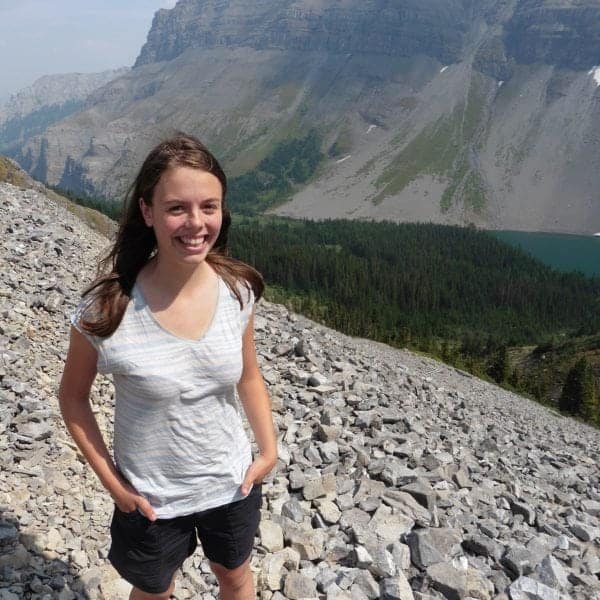Laurence Carter, a master's student at McGill University, is researching how muskox and caribou interact west of the Mackenzie Delta.

Photo courtesy of Laurence Carter
"There were muskox up until about the mid-19th century in Alaska, Yukon and west of the Mackenzie River in the NWT, but that population disappeared," said Carter. "So muskox were brought from Greenland at the beginning of the 20th century to Nunivak Island in Alaska."
The muskox migrated eastwards, and there have been muskox groups in Yukon since the 1980s. More recently, the animals have moved into the Northwest Territories, west of the Mackenzie Delta near Aklavik.
"There have been some issues raised by community members, mostly in Aklavik, about the re-introduced muskox population," said Carter. "The Wildlife Management Advisory Council had a meeting there in November 2017, where they discussed people's thoughts and observations about muskox."
Carter is completing her research under associate professor Murray Humphries, whose lab focuses on mammal ecology in Canada's North as well as how environmental change impacts Northern wildlife.
Carter said the main concern of community members was that the grazing habits of muskox were disturbing caribou.
Muskox may be eating food that is essential to caribou, or trampling caribou's food sources. Carter said there is some suspicion that caribou do not like the smell of muskox, and therefore may be avoiding them.
"Caribou haven't been coming as far east, as close to Aklavik, as they were in the past," she said. "But now, there are muskox there when people go out on the land, so people are having issues there when they go to hunt caribou."
While some muskox are being harvested, Carter said people are more interested in harvesting caribou.
The Yukon Government, in partnership with several Inuvik-based organizations, has put GPS collars on muskox in the region to track their activity.
Approximately 15 to 20 muskox are collared, and Carter said nearly every group of muskox has at least one collared animal in it.
"The collars allow us to have locations of the muskox," she said. "They're an essential tool, we can track the animals, we can determine what types of habitats they use, determine home range distribution, how much they move – all these questions can be tackled with the collar data."
Carter will be doing her field research west of Aklavik, in the Richardson Mountains and in Ivvavik National Park this summer.